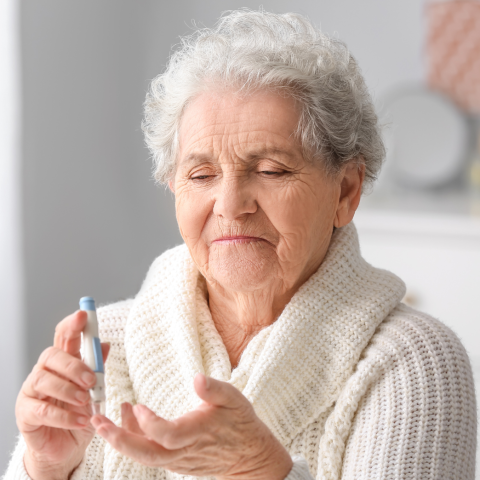
Diabetes Mellitus is a disease that affects the body's ability to absorb glucose, which is a form of sugar and a major source of energy. There are two types of diabetes:
- Type 1 (formerly known as juvenile diabetes)
- Type 2 (formerly called adult-onset diabetes)
Both types cause high levels of glucose in the bloodstream. High blood sugar can lead to many long-term effects of diabetes. Too much sugar in the blood can affect the linings of arteries of all sizes, which can cause atherosclerosis, where arteries become weakened and/or clogged with plaque.
Diabetes is a condition that impacts the entire body. Sugar travels through the bloodstream, and because blood vessels supply nutrients to all of our organs, having high levels of sugar in the blood can affect various areas of the body, specifically:
- Kidney Damage: The kidneys have tiny blood vessels that help remove waste from the blood, but diabetes can block these blood vessels. As the disease progresses, the kidneys may lose function and eventually stop working properly.
- Retinopathy: High blood sugar can cause tiny blood vessels in the eyes to become blocked. When your eyes try to grow new blood vessels, they can grow abnormally, which may lead to vision problems or blindness.
- Peripheral artery disease (PAD): High glucose levels can affect the arteries that supply oxygen and nutrients to the legs and feet. This can lead to pain in the legs, foot sores that won't heal, chronic pain from poor circulation, and in some cases, the need for amputation.
- Neuropathy: High blood sugar also alters the sensation in the feet, leading to numbness and inability to feel pain or rubbing, which increases the risk of wounds in the feet and toes.
Treatment
It is very important to manage diabetes carefully to reduce the risk of long-term effects on your body. Careful maintenance of your blood glucose level is the primary goal of treatment. The HbA1c is a blood test that estimates the average blood glucose level over a three-month period. Maintaining an HbA1c of less than 7% can help lower the risk of complications like amputation, heart attacks, stroke, and the development of PAD.
To help maintain healthy glucose control, consider the following:
- Avoid foods and snacks high in sugar, which can include seemingly innocuous items such as white bread and pasta.
- Engage in regular exercise to burn energy and improve your body’s ability to keep your glucose at a healthy level.
- Understand that medication is often required to maintain control.
- Consult with a diabetes specialist to help you manage your diabetes optimally.
- Explore new ways to check your glucose at home, including continuous glucose monitoring (CGM), which can help you better control your HbA1c.
Preventive Care
Preventive care is essential for reducing the risk of long-term complications from diabetes. Diabetes increases the risk of heart attacks, strokes, kidney failure, and PAD. Knowing the signs and symptoms of these conditions can help you seek care before a serious event occurs. However, diabetes can also dull the usual nerve responses, such as the pain from PAD. This loss of sensation increases the risk of pressure sores on the feet. It’s important for patients with diabetes to wear proper footwear and check their feet daily to catch any painless sores that could lead to infection or even amputation.
Collaborative Care
The best care for patients with diabetes involves working with a team of health care providers. This team may include primary care doctors, endocrinologists, cardiologists, kidney specialists, eye doctors, podiatrists, and vascular surgeons to help manage diabetes and prevent complications.
Preventing Further Complications
It is very important that patients with diabetes do not smoke as this accelerates the damaging effects of diabetes on blood vessels. Blood pressure and cholesterol levels must be managed as well to protect the blood vessels from damage in patients with diabetes.
Additional Resources
